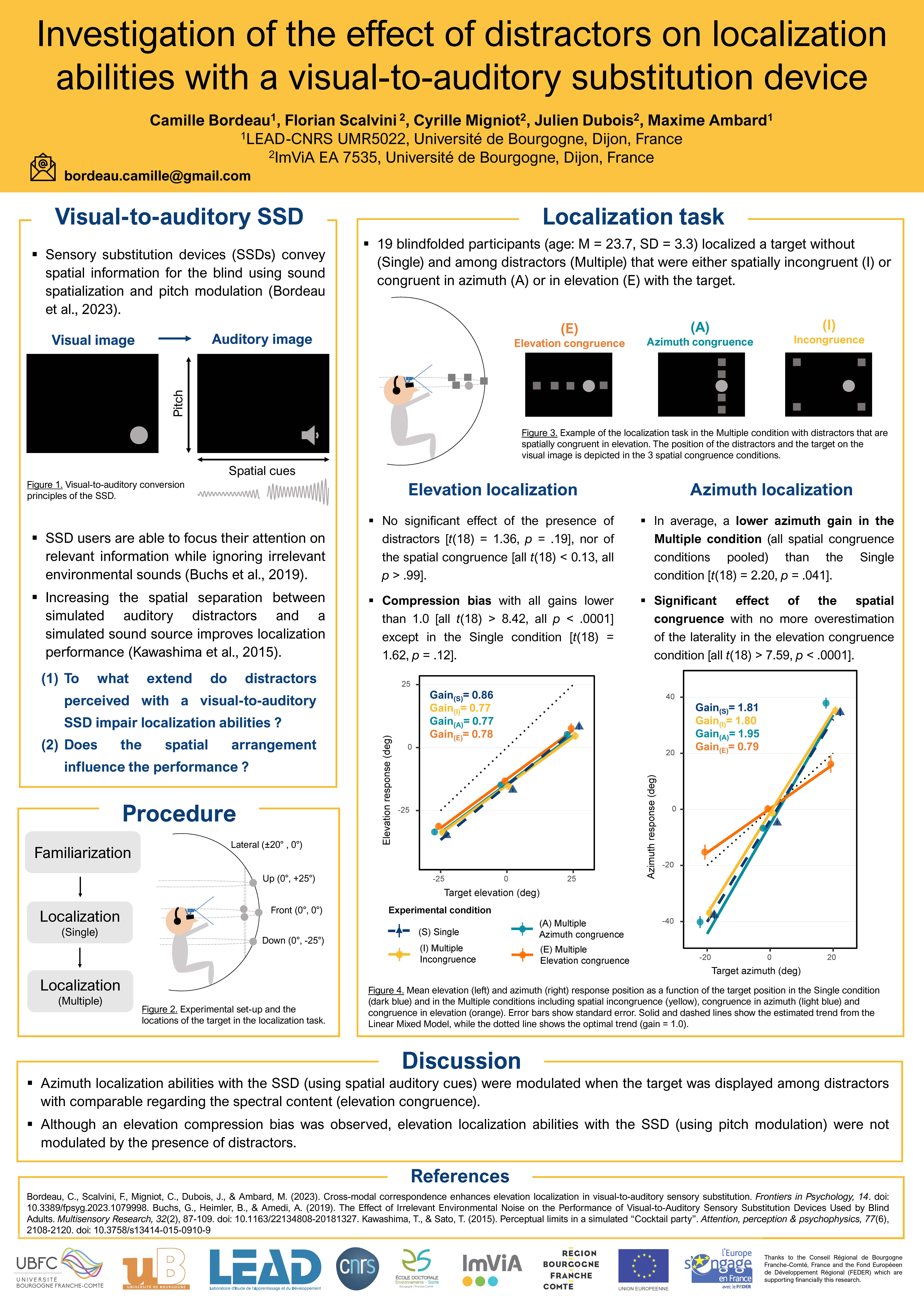Visual-to-auditory sensory substitution devices are assistive tools for the blind that convert visual images into soundscapes. These systems are meant to be used in daily life where it is common to evolve in complex scenes with various potential obstacles that have to be localized simultaneously. It is thus of a first importance to establish to what extend the function of the device (localization, navigation, recognition) can be accomplished depending on the complexity of the scene. So far, localization abilities with a substitution device have not been directly assessed in complex scenes with other irrelevant objects (or distractors). In this study, we evaluate the ability to perform a localization task in simple and complex spatial configurations where blindfolded participants had to localize a virtual target displayed alone or among virtual distractors, only relying on soundscapes. Results suggest that the spatial disposition of the target relative to the distractors can affect the localization performance when the soundscape associated to the target does not have a specific spectral signature. These results stress out the importance of the accordance between the limits of the space in which obstacles are sonified and the complexity of the context in which the user evolves.
Investigation of the effect of distractors on localization abilities with a visual-to-auditory substitution device
